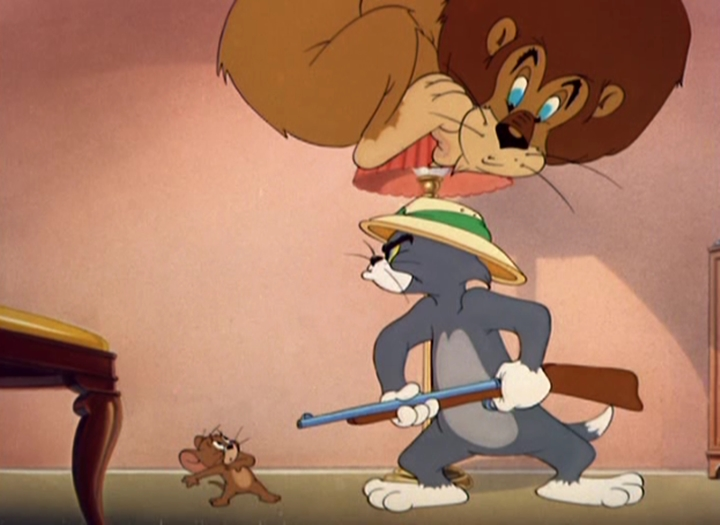
The first Tom and Jerry cartoon of 1951 is a gem that deserves to be more widely seen.
In this short film, Tom is courting the lovely girl cat, Toodles. He brings her flowers and a pet mouse (Jerry). After Tom makes Jerry do various tricks for Toodles, the mouse decides to get revenge. Jerry writes a love letter to Butch (the black cat who appears in many of these cartoons) and signs it Toodles. When Butch comes up to Toodles' place, Tom and Butch fight over the lovely girl cat.
This is a wonderful short. Tom and Butch fighting over a girl may have been done before and since, but this film makes the premise feel new and fresh. Every gag here is excellent. The gag with the flagpole is especially excellent. Though it may not be an original gag, the delivery of it is simply perfect. It moves at a fast pace that doesn't give you too much time to anticipate the gag but not too fast to where it loses its effect. The character animation on Butch in this scene is simply perfect as the pure confidence as he gives a suave smile makes the punch line even funnier. Speaking of character animation, the early scenes with Tom, Jerry and Toodles are also excellent. Without a single word these characters perfectly display all we need to know about them. We can see Tom's infatuation with Toodles and how hard he is working to impress her. We can see Jerry's growing frustration with Tom. We can also see Toodles being charmed by Tom's flirtations. With this the story and characters are set up quickly and effectively, allowing the film to spend the rest of its run time on slapstick gags. This shows how well William Hanna and Joseph Barbera understood not only slapstick comedy but also filmmaking.
The reason this cartoon is so little seen today is because of a brief scene where Tom makes Jerry dance in blackface. This scene has kept the film from appearing on the Tom and Jerry Spotlight DVDs. However, the film has appeared occasional on the TV channels ME-TV and Boomerang with this scene edited out. It is unfortunate that this one gag has kept one of the great Tom and Jerry cartoons from being better known.
The credited animators on this film are Irven Spence, Ray Patterson, Ed Barge and Kenneth Muse. This cartoon would be reissued to movie theaters in 1958.
This is the final theatrical cartoon for Tom's girlfriend Toodles. However of clips her cartoons (including her) are reused in the cheater shorts, Smitten Kitten (1952) and Smarty Cat (1955). The Tom and Jerry Wiki lists her as being the same female cat in the Chuck Jones Tom and Jerry cartoon, Love Me, Love My Mouse (1966), but I personally disagree. Later she would have cameos in the direct to video movies, Tom and Jerry: Back to Oz (2016) and Tom and Jerry: Willy Wonka and the Chocolate Factory (2017). She would also appear in episodes of the TV shows, Tom and Jerry Tales, The Tom and Jerry Show (the 2014 version) and Tom and Jerry in New York as well as the video games Tom and Jerry in House Trap, Tom and Jerry Infurnal Escape, Tom and Jerry Tales and Tom and Jerry Chase.

Motion Picture Daily, 1951
Below is the movie poster for this film. Tom doesn't look too bad, but Jerry looks awful.


















